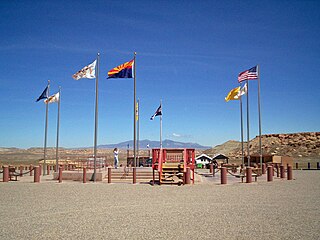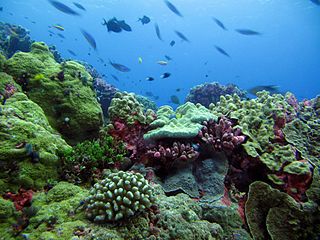
Sporobolus heterolepis, commonly known as prairie dropseed, is a species of prairie grass native to the tallgrass and mixed grass prairies of central North America from Texas to southern Canada. It is also found further east, to the Atlantic coast of the United States and Canada, but is much less common beyond the Great Plains and is restricted to specialized habitats. It is found in 27 states and four Canadian provinces.

Sporobolus is a nearly cosmopolitan genus of plants in the grass family. The name Sporobolus means "seed-thrower", and is derived from Ancient Greek word σπόρος (spóros), meaning "seed", and the root of βάλλειν (bállein) "to throw", referring to the dispersion of seeds. Members of the genus are usually called dropseeds or sacaton grasses. They are typical prairie and savanna plants, occurring in other types of open habitat in warmer climates. At least one species is threatened with extinction, and another is extinct.

Eragrostis cilianensis is a species of grass known by several common names, including stinkgrass, candy grass, and gray lovegrass.

Festuca idahoensis is a species of grass known by the common names Idaho fescue and blue bunchgrass. It is native to western North America, where it is widespread and common. It can be found in many ecosystems, from shady forests to open plains grasslands.
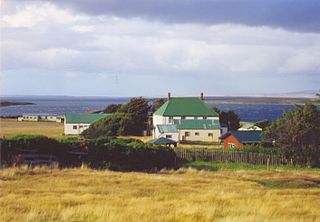
Tussock grasses or bunch grasses are a group of grass species in the family Poaceae. They usually grow as singular plants in clumps, tufts, hummocks, or bunches, rather than forming a sod or lawn, in meadows, grasslands, and prairies. As perennial plants, most species live more than one season. Tussock grasses are often found as forage in pastures and ornamental grasses in gardens.

Panicum capillare, known by the common name witchgrass, is a species of grass. It is native plant to most of North America from the East Coast through all of the West Coast and California. It can be found as an introduced species in Eurasia, and as a weed in gardens and landscaped areas. It grows in many types of habitat.

Dasyochloa is a monotypic genus containing the single species Dasyochloa pulchella, known as desert fluff-grass or low woollygrass, a densely tufted perennial grass found in the deserts of the southwestern United States.

Puccinellia lemmonii is a species of grass known by the common name Lemmon's alkaligrass. It is native to western North America, particularly the northwestern United States, where it grows in moist, saline soils.

Spartina foliosa is a species of grass known by the common name California cordgrass. It has been reclassified as Sporobolus foliosus after a taxonomic revision in 2014, but Spartina foliosa is still in common usage. It is native to the salt marshes and mudflats of coastal California and Baja California, especially San Francisco Bay. It is a perennial grass growing from short rhizomes. It produces single stems or clumps of thick, fleshy stems that grow up to 1.5 meters tall. They are green or purple-tinged. The long, narrow leaves are flat or rolled inward. The inflorescence is a narrow, dense, spike-like stick of branches appressed together, the unit reaching up to 25 centimeters long. The lower spikelets are sometimes enclosed in the basal sheaths of upper leaves.

Sporobolus airoides is a species of grass known by the common name alkali sacaton. It is native to western North America, including the Western United States west of the Mississippi River, British Columbia and Alberta in Canada, and northern and central Mexico. It grows in many types of habitat, often in alkali soils, such as in California desert regions.
Sporobolus contractus is a species of grass known by the common name spike dropseed. It is native to western North America, including the southwestern United States and northern Mexico. It grows in desert and plateau habitat, in woodlands, scrub, and dry, sandy, open areas.

Sporobolus cryptandrus is a species of grass known by the common name sand dropseed. It is native to North America, where it is widespread in southern Canada, most of the United States, and northern Mexico.
Sporobolus flexuosus is a species of grass known by the common name mesa dropseed. It is native to western North America, where it can be found in the deserts and woodlands of the Southwestern United States and Northern Mexico.

Sporobolus indicus is a species of grass known by the common name smut grass.

Dalea purpurea is a species of flowering plant in the legume family known by the common name purple prairie clover, better written as "prairie-clover," in recognition of the fact that it is not a true clover.
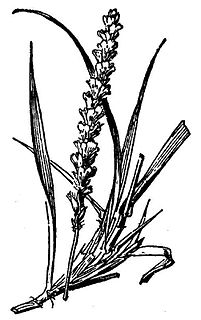
Pleuraphis mutica is a species of grass known by the common name tobosa, or tobosa grass. It is native to Northern Mexico, and the Southwestern United States, in Arizona, New Mexico, Oklahoma, and Texas.
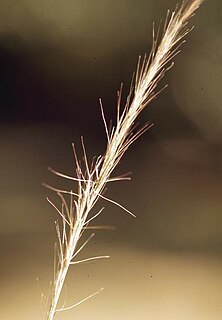
Aristida purpurascens is a species of grass known by the common name arrowfeather threeawn. It is native to eastern North America. One of the three varieties has a distribution extending south into Honduras.

Sporobolus junceus is a species of grass known by the common name pineywoods dropseed. It is native to the southern United States.
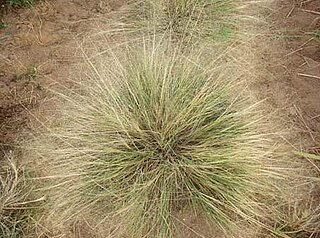
Sporobolus texanus is a species of grass known by the common name Texas dropseed. It is native to the western United States.
Sporobolus wrightii is a species of grass known by the common names big sacaton and giant sacaton. It is native to the western United States and northern and central Mexico.



